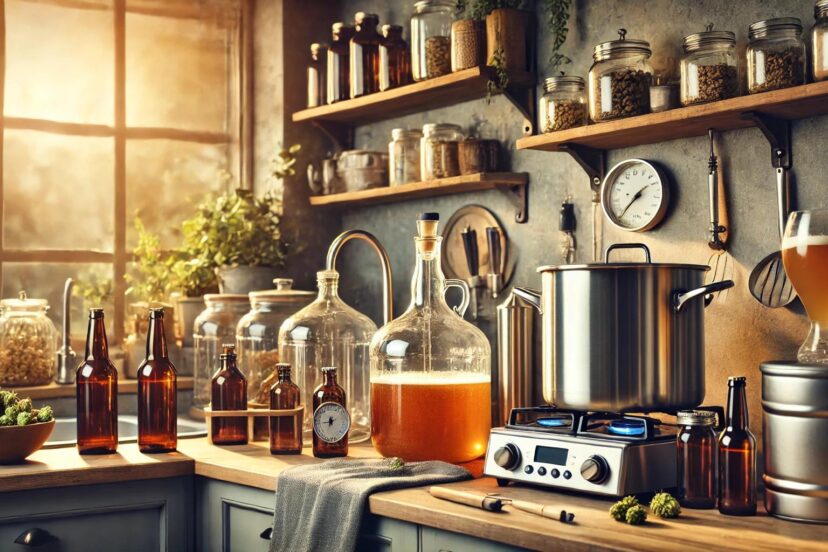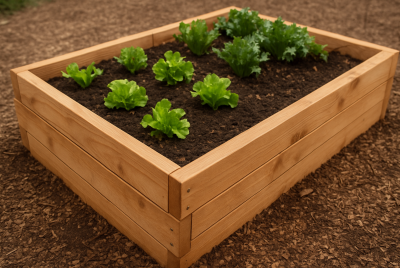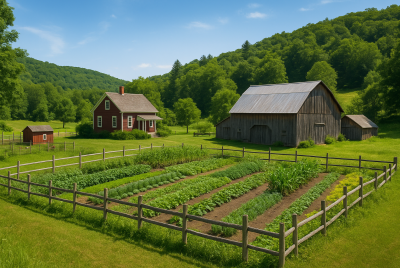Home Brewing: Your Guide to Crafting Beer at Home
We may earn a commission for purchases made using our links. Please see our disclosure to learn more.
While sipping on a cold glass of beer, a thought came to your mind… “What if I could brew this myself?”. But then, you’re lost and confused about where to even begin. Hey, no worries, I got you covered! Crafting a beer might seem daunting but it’s not that difficult to learn. If you have the proper knowledge and equipment, you’ll do well. In this guide, I’ll walk you through the process of home brewing step by step. Ready to sip a flavorful beer?
What Is Home Brewing?
Home brewing means making or crafting beer, cider, or even mead at home, mainly for personal use. It’s an inexpensive hobby (usually costs around $30-$40 per 5-gallon batch) that allows you to experiment with flavors. The ingredients are quite simple—water, malt, hops, and yeast. Using these ingredients, you can transform them into beer! Imagine saying “cheers” with confidence and pride. Yeah, you made those beers after all!
Why Brew Your Own Beer?
Why wouldn’t you? Brewing at home is fun and rewarding! You control the taste, the strength, the ingredients. You can even design your perfect brew. Plus, once you get the hang of it, it’s often cheaper than buying fancy craft beer from the store. And honestly, there’s nothing more satisfying than sharing a cold one with friends, knowing “you” made it. I once brewed a batch so good, that my friends thought I had a secret brewery hidden in the back of my garage. Ah, a good feeling!!!
The Essentials of Home Brewing
To dive into the world of home brewing, you’ll need a few key pieces of equipment:
- A fermentation vessel (glass carboy or plastic bucket)
- An airlock (yes, it’s as cool as it sounds)
- A hydrometer (for measuring your beer’s potential strength)
- A brew kettle (for boiling your ingredients into liquid gold)
- Sanitizing solution (because cleanliness is everything in brewing)
- Bottles and caps (for when your brew is ready to make its debut)
These might sound like a lot, but don’t fret—they’re your new best friends in this adventure.
The Four Key Ingredients
Beer is a delicate balance, and every batch is built upon four foundational pillars:
- Water: The base of everything. You don’t want to skimp here—purified water is your best bet.
- Malt: The heart of your brew. Malt brings the sugars that the yeast loves to feast on.
- Hops: These little beauties add bitterness and aroma, giving your beer a nice, balanced flavor.
- Yeast: The true alchemist of your brew. Yeast turns sugar into alcohol and carbonation, like a tiny brewery worker with a PhD in fermentation.
Brewing Terminology 101
Before we get our hands dirty, let’s take a moment to learn some lingo:
- Wort: The liquid you get after boiling your malt and water. It’s the pre-beer, and it smells incredible.
- Fermentation: The magic moment when yeast does its thing, turning sugars into alcohol.
- ABV (Alcohol by Volume): This tells you how strong your beer is. (Spoiler: higher ABV means more fun.)
- IBU (International Bitterness Units): A measure of how bitter your beer is. The higher the IBU, the more intense that bitter kick.

Your Step-by-Step Guide to Home Brewing
Excited to start brewing? Let’s break it down into simple steps:
Step 1: Gather Your Ingredients
Pick a recipe that fits your style. If you’re new to this, start with something easy—maybe a pale ale or a wheat beer.
Step 2: Boil the Wort
In your brew kettle, combine your malt and water and bring it to a boil. This is where things start to get exciting. As the wort simmers, you’ll add hops at different intervals to layer in that perfect flavor.
Step 3: Cool the Wort
Once the wort is nice and hot, it’s time to cool it down so the yeast doesn’t get shocked. Use an ice bath or wort chiller (they’re like the beer spa for your brew).
Step 4: Fermentation
Now for the fun part. Transfer the cooled wort to your fermentation vessel, pitch in your yeast, and seal it up with an airlock. Let the yeast work its magic for about 1-2 weeks. (Patience is key here. It’s like waiting for a cake to bake—except the cake is a beer and it’s worth the wait.)
Step 5: Bottling and Carbonation
When fermentation’s done, it’s time to bottle. Add a little priming sugar (this is what gives your beer its sparkle) and cap the bottles. Then, let them sit for another week or two to carbonate. (Trust me, your future self will thank you for this step.)
Step 6: Enjoy Your Brew
After all that work, it’s finally time to enjoy the fruits of your labor. Chill your beer, pour it into a glass, and take a sip. You did it! Cheers to your first homemade beer.
Common Mistakes to Avoid
No one’s perfect, and that’s okay. Here are a few mistakes to avoid:
- Skipping sanitation: Germs can ruin your beer. Sanitize everything that touches your brew.
- Wrong yeast: Choosing the wrong yeast can derail your flavor. Trust the recipe!
- Rushing fermentation: Good things take time. Don’t rush the yeast—it knows what it’s doing.
- Wrong measurements: Measure carefully. This isn’t a “guess and hope” type of project.
Tips for Perfecting Your Brew
Want to level up your beer game? Here’s what to try:
- Play around with different hops. You might just stumble upon a new favorite flavor.
- Use the freshest ingredients you can find.
- Keep the fermentation temperature steady. Yeast likes it nice and consistent.
Essential Home Brewing Products Available on Amazon
Below is a curated list of must-have products available on Amazon, designed to make your brewing process smooth, enjoyable, and efficient.
- Home Brew Starter Kits – For beginners, a starter kit is the ideal way to dive into brewing. These kits come with the basic tools you need to make your first batch of beer with confidence.
- Fermentation Vessels – A good fermentation vessel is essential for ensuring your beer develops the right flavors and carbonation.
- Brew Kettles – The brewing kettle is where your beer begins its journey. A sturdy, reliable kettle ensures even heat distribution for the perfect boil.
- Sanitizing Supplies – Cleanliness is crucial in home brewing to avoid unwanted bacteria or off-flavors in your beer.
- Hydrometers – A hydrometer measures the specific gravity of your brew, helping you track fermentation progress and determine alcohol content.
The Science of Fermentation
Fermentation is where the real magic happens. Think of yeast as little workers inside your beer, munching on sugar and turning it into alcohol and bubbles. (Kind of like the elves in Santa’s workshop, but for beer.)
Home brewing combines fascinating chemistry with potential health benefits. Research highlights the intricate interactions between ingredients like malted barley, hops, water, and yeast that define beer’s unique flavors and qualities (learn more about beer chemistry). Additionally, moderate craft beer consumption has been linked to health benefits, thanks to its phenolic content, which may support cardiovascular health when enjoyed responsibly (explore the health benefits of craft beer).
Exploring Different Beer Styles
The world of beer is vast—so many styles to try! Here are a few to get you started:
- Pale Ales: Light and refreshing, perfect for a sunny afternoon.
- Stouts: Rich, dark, and full of roasted goodness. Think coffee, chocolate, and beer—what’s not to love?
- IPAs: Bold and hoppy, for those who like their beer to pack a punch.
- Wheat Beers: Smooth and slightly sweet, they’re perfect for a summer day.
Crafting Unique Recipes
Once you’ve mastered the basics, why not get creative? Add spices, fruits, or even coffee to make a brew that’s completely your own. (I once added a touch of cinnamon to a dark beer for a warm, cozy vibe. Totally unexpected, totally delicious.)
Troubleshooting Brewing Issues
Not every batch will be perfect, but that’s okay. Here’s how to troubleshoot:
- Flat Beer: Check your sugar levels and bottle seals.
- Cloudy Beer: Make sure your cooling and filtering process is spot on.
- Off Flavors: It could be a sanitation issue, so make sure everything’s clean.
Check this out:
The Joy of Sharing Your Brew
One of the best parts of brewing is sharing your beer with others. Host a tasting party, swap bottles with friends, or just enjoy a cold one together. It’s a great way to connect and trust me, people will be impressed with your brewing skills.
Scaling Up Your Brewing
As you gain confidence, you may want to upgrade your gear. A bigger fermentation tank, a kegging system, or even an automatic bottle filler—there’s always room to grow.
Staying Sustainable
Home brewing can be surprisingly eco-friendly! You can reuse bottles, compost your spent grains, and look for sustainable ingredients. Who says brewing can’t be green?
Joining the Home Brewing Community
There’s a whole world of home brewers out there, ready to welcome you. Join local clubs, attend beer festivals, or dive into online forums. You’ll meet new friends, swap tips, and maybe even discover your new favorite beer.
The History of Home Brewing
Beer brewing has been around for thousands of years. Ancient civilizations like the Sumerians brewed beer with rudimentary tools, and now, you can make your own with just a few clicks and a well-stocked kitchen. (Talk about progress!)
Health Benefits of Moderate Beer Consumption
When enjoyed responsibly, beer can actually have some health benefits. It’s packed with antioxidants and may even help reduce stress. (But, remember, moderation is key! You don’t want your brew to become a “beer belly.”)
The Business Side of Home Brewing
Dreaming of turning your brewing passion into a business? Many craft breweries started in someone’s garage. It’s a big leap, but if you’re passionate and dedicated, it could be your next adventure.
Conclusion
Home brewing is about more than just making beer—it’s an opportunity to express your creativity, develop patience, and embrace the joy of mastering a new skill. Whether you’re crafting a light and refreshing pale ale to enjoy on a sunny afternoon or a rich, full-bodied stout for cozy winter evenings, every batch you brew represents progress toward refining your craft and discovering new flavors. For more homesteading tips, check out our guide on urban homesetading.
FAQs
1. Do I need a lot of space for home brewing?
Nope! You don’t need a huge setup. A small corner in your kitchen or garage will do just fine for brewing.
2. How much time is required to brew beer?
The entire brewing process usually takes about 4 to 6 weeks, from start to finish.
3. Is home brewing expensive?
The initial setup might cost a little bit, but in the long run, brewing your own beer is more cost-effective than buying it from the store.
4. Can non-alcoholic beer be brewed at home?
Absolutely! By controlling the fermentation process, you can make non-alcoholic versions of your favorite beer.
5. Do I need a license to brew beer at home?
In most places, home brewing for personal use is legal and doesn’t require a license. Just double-check your local regulations to be sure!




